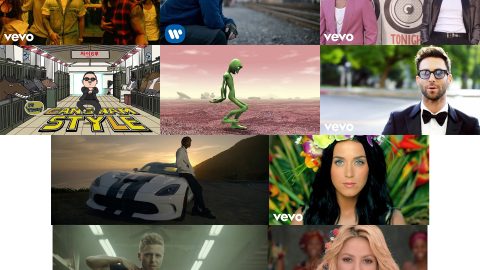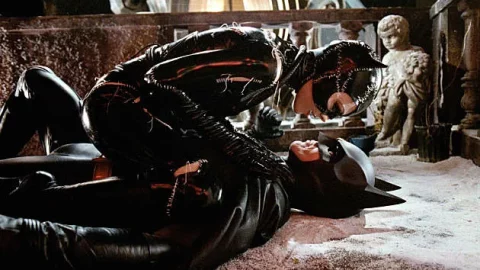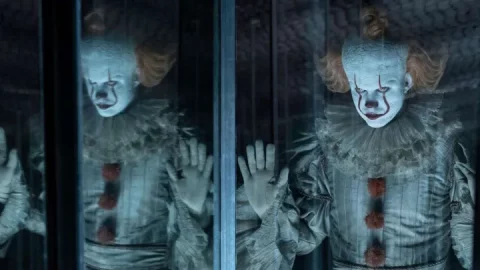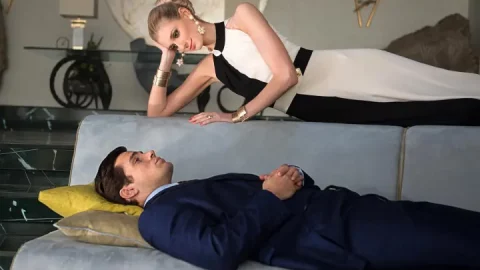If you are willing to pay to stream, YouTube offers the largest collection of recently released films of any platform. However, if you are looking for free legal movies, the video streaming service also offers a great selection of them. Really! And we are not talking about strangely grainy, shaky films that were uploaded. Alongside cute animal montages and viral stars, there are real deal, 100% free (and good) movies available.
This hidden gem collection, which you have to search through a lot of DVD knockoffs and straight-to-DVD titles to find, is in addition to a large number of classics that are free because they have entered the public domain on YouTube. These films are broken down into two categories: the top 25 free YouTube movies and the top 25 new YouTube movies that require a subscription; both lists are updated on a monthly basis. Rentable film selections underwent a significant change this month, with several of the more recent releases appearing on our lists of the Best of 2023.
Also, be sure to peruse our lists of the top films available on Redbox, Netflix, Amazon Prime, Max, Hulu, and On Demand. or go to every Paste Movie Guide available.
The Top 20 Free YouTube Movies are listed below:
1. Steamboat Bill, Jr.
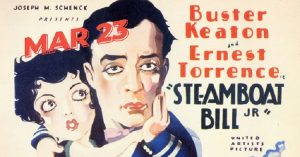
Year: 1928
Director: Buster Keaton and Charles Reisner
Stars: Buster Keaton, Ernest Torrence, Marion Byron
Rating: NR
Runtime: 77 minutes
Great action and great comedy combine in Steamboat Bill, Jr.’s climactic cyclone sequence, which alone would cement the movie’s cherished place in the annals of the greatest silent films ever made. Among the many amazing moments in the free-flowing, mind-blowing sequence is the iconic shot of Keaton being struck by the facade of a house breaking down. However, Steamboat Bill, Jr. also features a few scenes that highlight Keaton’s amazing intimacy as an actor, such as when his father tries to find him a more manly hat or when he makes an agonizingly funny attempt to pantomime a jailbreak scheme. —Jeremy Mathews
2. Sunrise
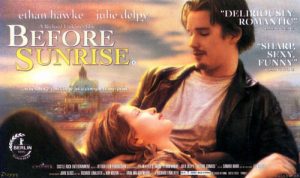
Year: 1927
Director: F.W. Murnau
Stars: Janet Gaynor, George O’Brien, Margaret Livingston
Rating: NR
Runtime: 110 minutes
During the last few years of the 1920s, the excitement was palpable as brilliant filmmakers pushed to unlock the medium’s full potential. Sunrise was born of that ambition, as Fox brought German genius F.W. Murnau to Hollywood, where he and his cameramen used all the resources at their disposal to create some of the most stunning visuals ever put on celluloid. Telling the story of a husband who strays and then tries to redeem himself, Murnau’s camera flies over country fields, gets tangled in the bustle of the city and desperately looms over a lake in a storm, while his actors, George O’Brien and Janet Gaynor, radiate with sincerity. —Jeremy Mathews
3. Fear and Desire
Year: 1953
Director: Stanley Kubrick
Fear and Desire, the 24-year-old Stanley Kubrick’s feature debut, which he later called “a bumbling amateur film exercise,” demonstrates the filmmaker’s ability to evaluate his own work objectively. Not that the hour-long war film, a meandering and tepid critique of the uh, “police action” in Korea, is without merit; rather, what makes the film appealing are the immature interests of a filmmaker still honing his craft. The actors typically overact the overwritten material in response to the purple prose of future Pulitzer Prize winner Howard Sackler, which overflows with strained metaphors and abstract intellectualizing in both dialogue and voiceover. Frank Silvera, who would later feature in Stanley Kubrick’s superior sequel Killer’s Kiss, goes grimier and gruffer than the others in order to bring out the most humanity in the four soldiers who have crash-landed behind enemy lines. His no-frills blue collar approach, juxtaposed with the near comic-strip sincerity of Kenneth Harp and the simpering mania of Paul Mazursky (the Bob & Carol & Ted & Alice filmmaker making his acting debut), encourages us to read some of the deliberate ambiguity of the film’s emotions on his face. Additionally, Kubrick’s faces continue to be prominent: The film’s best scene is a mid-movie freakout between Mazursky’s private and a local woman he is captured; it is also possibly the director’s first instance of that unsettling straight-at-the-camera look that has come to be known as the Kubrick Stare, thanks to films like A Clockwork Orange, The Shining, Full Metal Jacket, and Fear and Desire. The scene is full of pet themes and physicalizations of these ideas, and the look is a succinct but telling stylistic choice. It represents violence and desire and how those two always seem to be neighbors in men. Some of the most iconic pictures from the film are of people holding hands and spilling stew, but the fact that these pictures are the ones that people remember the most is kind of indicative. As a movie, Fear and Desire falls short of its experimental aspirations, but as a “film exercise,” it is a demonstration of a director who has an eye and is rapidly improving on everything else. —Jacob Oller
4. Our Hospitality
Year: 1923
Directors: Buster Keaton, Jack Blystone
Stars: Buster Keaton, Natalie Talmadge, Joe Keaton
Rating: NR
Runtime: 74 minutes
Buster Keaton enjoyed watching ridiculous human behavior more than he did making grandiose social commentary. Making Our Hospitality, which is about a family feud spanning generations and pitted against the southern hospitality code, was therefore not difficult for him. Because of the code, which prohibits killing guests, Keaton’s character is unable to escape after inadvertently entering the home of his enemy family. Keaton enjoys making escape attempts and uses the house’s interior as a safe haven in case something goes wrong. The dinner prayer, when everyone is more interested in observing each other than in praying, is the funniest part of the ceremony. Everything comes to a perfect climax with a river chase sequence that includes an amazing waterfall stunt. Not to mention the use of Stephenson’s Rocket, the historically accurate but ridiculously small train that takes our hero from New York City in the first act. Jan. 1 marked the addition of this movie to the public domain. —Jeremy Mathews
5. Sherlock Jr.
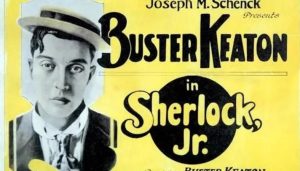
Year: 1924
Director: Buster Keaton
All you would need to do to satisfy everyone’s inanities would be to play Buster Keaton’s Sherlock, Jr. on a highlight reel of outstanding silent comedy scenes. Nobody has written a more insightful analysis of the relationship between the audience and the silver screen in the ninety-one years since Keaton created his love letter to the motion picture. Keaton plays a projectionist for movie theaters and an aspiring detective who has a dream in which he walks into a movie screen and transforms into a dapper hero, which is the ideal representation of the allure of movies. Keaton uses masterful special effects to play with reality, but he also pulls off real stunts in a single take. (He completed the take despite breaking his neck in a single scene.) He deftly manipulates the narrative framework; the conflict is settled midway through the film without the hero’s assistance. His rhyming gags give visual poetry to slapstick. The humor stemming from both real-life setbacks and serendipity in the realm of fantasy films, yet the mechanisms are similar. And he weaves it all together into a romp that keeps going in the direction of more humor. —Jeremy Mathews
6. The General
Year: 1926
Directors: Buster Keaton and Clyde Bruckham
Stars: Joseph Keaton, Marion Mack, Glen Cavender
Rating: NR
Runtime: 79 minutes
Southern railroad engineer “The Great Stone Face” Buster Keaton is forced to pursue his two loves across enemy lines after Yankee spies steal his locomotive and abduct his girlfriend. Though there are a few Charlie Chaplin films that can compete with it, The General is unquestionably the best silent comedy ever made, if not the best comedy ever made. The movie, which was released at the height of Buster Keaton’s legendary career, was not a box office or critical hit, but it has held up incredibly well over time. It is a silent masterpiece that seamlessly blends action (chases, fires, explosions), comedy, romance, and adventure into a spectacular story. —David Roark
7. The Birdcage
Year: 1996
Director: Mike Nichols
Stars: Robin Williams, Gene Hackman, Nathan Lane
Rating: R
Runtime: 119 minutes
What makes this awkward? As a middle-aged gay Jewish drag club owner in South Beach (Armand, portrayed by Robin Williams), you receive a visit from your straight son asking for permission to marry his girlfriend. This woman happens to be the daughter of a Neocon senator (Gene Hackman), who is in charge of “The Coalition for Moral Order.” You want to be there for your child, but you do not love that he is closeted. As a result of the dinner meet-up, you and your partner, Albert (Nathan Lane), are compelled to engage in a completely new level of drag in which you are married to the straight-sex experiment Katherine (Christine Baranski), a one-night stand that resulted in your son’s conception. Tensions are high on all fronts; your partner is offended, the Senator is under investigation by the tabloids, and your houseboy Agador (Hank Azaria) has agreed to change into a Greek butler named “Spartacus.” That is before your baby mama gets stuck in traffic and Albert spots the chance to land the drag role of a lifetime. Completely Shakespearean antics follow. While Mike Nichols’ 1996 adaptation of Edouard Molinaro’s La Cage Aux Folles may not have been a blistering social commentary, there are some depths beneath its glib, feel-good star vehicle exterior that are easy to miss if you are preoccupied with Williams and Lane’s ridiculously glamorous antics. In addition to being lively and funny, The Birdcage—like many of Robin Williams’ film roles—has a serious streak in which a sincere exploration of personal identity is under way. Hypocrisy, acceptance, snobbery, and most importantly, everyone’s unique “drag”—because, let us face it, we all have one, even if we do not always express it by wearing false eyelashes and belting out Sondheim—are all given a much-needed examination. —Amy Glynn
8. Nosferatu
Year: 1929
Director: F. W. Murnau
Stars: Max Schreck, Alexander Granach, Gustav von Wangenheim
Runtime: 63 minutes
It seems pointless to include the sublimely odd Dracula riff by F.W. Murnau on this list because it has been a staple of the genre for so long. Magnificent in its gloomy, freakish mood and surreal visuals, the film created a great deal of the contemporary vampire canon. It is the most satisfying kind of once-a-year required viewing. —Sean Gandert
9. Barry Lyndon
Year: 1975
Director: Stanley Kubrick
Stars: Ryan O’Neal, Marisa Berenson, Patrick Magee, Hardy Kruger, Diana Koerner, Gay Hamilton
Rating: PG
Runtime: 185 minutes
Barry Lyndon is the most brilliant and underappreciated of Stanley Kubrick’s films, despite the fact that he is one of the few directors in the history of the medium to have produced multiple masterpieces. Barry Lyndon personifies everything that makes Kubrick what we now refer to as “Kubrickian”: his meticulous planning, his attention to detail, his sheer drive, and his tactful suggestion that perhaps history has not given him enough credit for his prowess as an actor-director. Perhaps this is because, although this is not a foolproof argument—see The Shining, for example—the majority of Kubrick’s other films rely more on masterful screenwriting and craft than they do on outstanding performances. For the benefit of Kubrick’s ensemble, Barry Lyndon is a beautifully, thoughtfully, and flawlessly designed actor’s stage. It is a film intended to give stars Ryan O’Neal, Marisa Berenson, Patrick Magee, and others their due while making sure that they do so against the most breathtaking background imaginable. –Andy Crump
10. The Navigator
Year: 1924
Directors: Buster Keaton, Donald Crisp
Stars: Buster Keaton, Kathryn McGuire, Fred Vroom
Runtime: 63 minutes
Every possible joke is mined from an ocean liner by The Navigator. In the film, Keaton portrays a naive, wealthy young man who gets stuck on a massive, drifting ship. The only person who can keep him company is the equally naive, wealthy, and rejected woman. These two pampered, upper-class idiots must improvise in hilarious ways to maintain control because they have no idea how to even open a can of food, much less sail a ship. In typical Keaton fashion, the scene where the two characters suspect someone else is on the boat but are unable to locate them is played out with well-timed wide shots that add to the plausibility of the two characters’ continued separation. The most memorable part might be a spooky night when the characters succumbed to the creepiness of the boat. —Jeremy Mathews
11. The Scarecrow
Year: 1920
Director: Buster Keaton, Eddie Cline
Stars: Buster Keaton, Joe Roberts, Joe Keaton
Runtime: 21 minutes
The Scarecrow, in my opinion, is the most humorous of Buster Keaton’s two-reelers, even though some have more spectacular stunts, ambitious special effects, and intricate chase scenes. The movie moves from scene to scene without ever pausing to refuel, constantly building to and rewarding new jokes. Among the greatest parts are a cleverly constructed one-room house, an appearance by the legendary Luke the Dog, and some genuinely heavenly back-and-forth between Keaton, Joe Roberts, and Keaton’s father, Joe. —Jeremy Mathews
12. Bernie
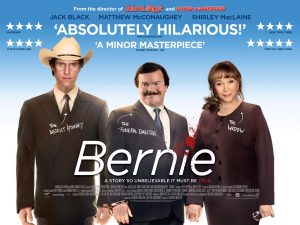
Year: 2011
Director: Richard Linklater
Stars: Jack Black, Matthew McConaughey, Shirley MacLaine
Runtime: 104 minutes
The town of Carthage, Texas, and its notorious resident Bernie Tiede (Jack Black), the mortician and main suspect in the murder of Marjorie Nugent (Shirley MacLaine), one of the town’s most hated residents, are both central themes in Bernie. Bernie is clearly adored by everyone, in contrast to Nugent. He teaches Sunday school when he is not assisting with the direction of the high school musical. Linklater’s superb, darkly humorous (and true) story is peppered with enticing interviews with the locals, much like a well-played mystery. The fact that Linklater casts actual East Texas residents in the roles acts as the ideal counterpoint to the suspense that builds to Bernie’s tragic meeting with the wealthy widow. Those townspeople provide some of the funniest lines in the movie, which has a sharp sense of humor. —Tim Basham
13. Blackmail
Year: 1929
Director: Alfred Hitchcock
Stars: Anny Ondra, John Longden, Donald Calthrop
Runtime: 86 minutes
Blackmail, directed by Alfred Hitchcock, was both his first and last silent film. The silent version has a much smoother flow, but the sound version is renowned for Hitchcock’s experiments with the new technology (most notably, a scene that emphasizes the word “knife”). Furthermore, Donald Calthrop’s portrayal of the blackmailer is even more eerie when only his expression and body language are used. —Jeremy Mathews
14. Pumping Iron
Year: 1977
Director: Robert Fiore, George Butler
Rating: PG
Runtime: 85 minutes
Behold arrogance anthropomorphized: In the midst of competing for his sixth Mr. Olympia title, a 28-year-old Arnold Schwarzenegger effortlessly waxes poetic about his overall excellence. His litanies about the similarities between lifting weights and orgasms serve as mere filler between sessions of pumping the titular iron and/or flirting with women he can stuff into his biceps like little burritos of flesh. He is a unique weightlifting wunderkind who is both the pinnacle of the human form and almost tragically inhuman. His physique is so flawless that it seems unachievable. However, a young, apprehensive Lou Ferrigno primes his equally massive body to usurp Arnold’s title in the opposite corner, minus the generous bluster and dick-wagging swagger the soon-to-be Hollywood icon makes no effort to conceal. As with any sport, Schwarzenegger knows that weightlifting is a mind game best supported by a healthy sense of privilege and vanity. Directors Fiore and Butler dig enough into Arnold’s past to determine where he inherited this kind of self-absorption. When you compare this mindset to Ferrigno’s almost delusional shyness, Pumping Iron offers an intriguing look at the kind of sociopathy expected of living gods. —Dom Sinacola
15. The Kid
Year: 1921
Director: Charlie Chaplin
Stars: Charlie Chaplin, Jackie Coogan, Edna Purviance
Runtime: 60 minutes
One of Charlie Chaplin’s greatest works and his first feature film, The Kid, is about an abandoned child and the life he builds with The Little Tramp. In contrast to his previous work, Chaplin created a more serious film despite strong studio opposition. But The Kid has just as much slapstick humor as his earlier shorts, albeit in a more expansive, dramatic setting. —Wyndham Wyeth
16. Night of the Living Dead
Year: 1968
Director: George A. Romero
Stars: Judith O’Dea, Russell Streiner, Duane Jones
Rating: R
Runtime: 90 minutes
The impact of George Romero’s debut zombie movie on the genre and horror in general does not really need to be explored; it is among the greatest horror films ever made and among the most significant independent productions as well. More appropriately, the question is “how does it hold up today?” and the response is “okay.” In contrast to, say, Dawn of the Dead (which is not on Shudder), Night is generally quite calm. While the black-and-white cinematography and story conventions are timeless, some of the performances—especially Judith O’Dea’s as Barbara—are incredibly annoying. But in a story that is very self-sufficient and provincial—just one small group of people in a house, with no real thought to the wider world—Duane Jones more than makes up for that as the heroic Ben. Every student of the genre should watch this horror movie, which is simple to do given that it is still in the public domain. However, Romero would refine the genre in his subsequent works, making it more entertaining. Also recommended: The 1990 remake of this film by Tom Savini, which is unfairly derided just for being faithful to its source. —Jim Vorel
17. Ghost in the Shell
Year: 1995
Director: Mamoru Oshii
It is hard to overestimate the impact Ghost in the Shell has had on the development of Japanese animation, both culturally and aesthetically, as well as on the direction of science-fiction film in general in the twenty-first century. The film, which is an adaptation of Masamune Shirow’s original 1989 manga, is set in the fictional Japanese city of Niihama in the middle of the twenty-first century, in a world populated by cyborgs with prosthetic bodies. The protagonist of Ghost in the Shell is Major Motoko Kusanagi, who leads Public Security Section 9, a domestic special operations task force. As she finds herself in an artificial environment, she starts to doubt her own humanity. Motoko and her team are tasked with capturing the enigmatic Puppet Master, an elusive hacker who is regarded as one of the most dangerous criminals on the planet. Along the way, they chase after a string of crimes committed by the Puppet Master’s gullible pawns, but the seemingly unconnected incidents eventually come together to form a pattern that points directly toward the Major. Everything about Ghost in the Shell exudes sophistication and depth, from the dilapidated marketplaces and cramped hallways that are modeled after Kowloon Walled City, to the sound design, which is demonstrated by Kenji Kawai’s melancholy score, to the impact of each bullet that shoots across the screen. Oshii transformed an already intense science-fiction action drama about the dawn of machine intelligence into a proto-Kurzweilian fable, perhaps even surpassing Shirow’s original material. Beyond being a mainstay of cyberpunk literature, Ghost in the Shell explores what it means to create a self in the digital age, when the meaning of truth is as fluid and limitless as the internet. —Toussaint Egan
18. The Last Man on Earth
Year: 1964
Directors: Ubaldo Ragona, Sidney Salkow
Stars: Vincent Price, Tony Cerevi, Franca Bettoja
Runtime: 86 minutes
Though it has proven notoriously difficult to adapt Richard Matheson’s I Am Legend without losing any of its ideas, this adaptation is probably the best overall, especially when compared to the 2007 version of I Am Legend starring Will Smith or the later Omega Man. Its wonderfully gothic settings in Rome, where the last human man on Earth fights a nightly battle against the “infected,” who have taken on the characteristics of classical vampires, have led some critics to declare it Vincent Price’s best film. It uses Price’s captivating screen presence and monologue skills, though it does not entirely embrace the source material’s protagonist/antagonist reversal. Nobody ever looks at a Vincent Price film and says, “I wish there was less Vincent Price in this,” and Price gives one of his best performances to date in The Last Man on Earth. George Romero, the director of Night of the Living Dead, has said that the idea of the modern zombie would never have occurred to him if not for The Last Man on Earth. —Jim Vorel
19. Buchanan Rides Alone
Year: 1958
Director: Budd Boetticher
Stars: Randolph Scott, Craig Stevens, Barry Kelley
Rating: NR
Runtime: 80 minutes
Randolph Scott can be taken prisoner, set free, and taken prisoner again, how many times? The response appears to be “as many times as it takes to fill 80 minutes” in Buchanan Rides Alone. In this witty Western, which adapts Jonas Ward’s The Name’s Buchanan, a chipper oak tree named Scott must withstand the ax blows of a corrupt, family-run town. Agry and the clan bearing his name are adamantly opposed to the powerful, quiet Texan, and their conflict only intensifies when he steps in to support Juan De La Vega (Manuel Rojas), a Mexican man seeking retribution from a young, inebriated Agry for raping his sister. When the judge, the hotel manager, and the sheriff are all named Agry, no good deed goes unpunished. The most foolish of the group is Peter Whitney, who plays the hotel manager. His clumsy antics in a physically flamboyant performance serve to uphold rather than compromise Scott’s rigid morals. This sense of duty in the face of avaricious little bullies is energizing, and it also keeps the repetitive plot (remember, they are constantly getting thrown into jail) fresh. A few scenes are stolen by L.Q. Jones’ henchman, who plays a fellow Texan who gets drawn to Scott. Boetticher uses a few too-tight close-ups and a last-minute stand-off over some cash-filled saddlebags to show off his arsenal of frugal filmmaking techniques, all in the service of an oddly charming story about noble outsiders versus gluttonous insiders. —Jacob Oller
20. The Red Turtle
Year: 2016
Director: Michaël Dudok de Wit
Stars: Emmanuel Garijo, Tom Hudson
Rating: PG
Genre: Animation, Drama
Wordless, The Red Turtle is an effort to convey ancient truths in new ways, or old new ways, that seem fresh but aren’t. The single word in Michaël Dudok de Wit is animated film The Red Turtle begs the question of whether it is a word at all given its isolation amidst the loud non-language of the rest of the film, which includes the ever-present, somnambulant waves, the wildlife on the tiny “deserted” island, and Laurent Perez del Mar’s score. In addition to engaging in a lifetime of nonverbal communication, our unnamed protagonist exclaims, “Hey!” so frequently that it becomes relatively easy for the director, De Witt, to trick you into believing that his movie is wordless. De Wit, a man of Dutch and British descent, may feel that language stands between the audience and the emotional scope of his (admittedly fairly archetypal) story. He was also encouraged to forgo dialogue entirely by the fact that animation is the one feature-length cinematic format that is more understanding of wordlessness than any other. Take that one straightforward illustration of the movie’s power, among many others: The Red Turtle raises many questions, such as whether animated films could ever be so beautiful, so meticulous, and so obviously the product of one person dedicating his entire life to a single story because he might not have the chance to do so again. It also makes you wonder if a word you have known your entire life is truly that. —D.S.


